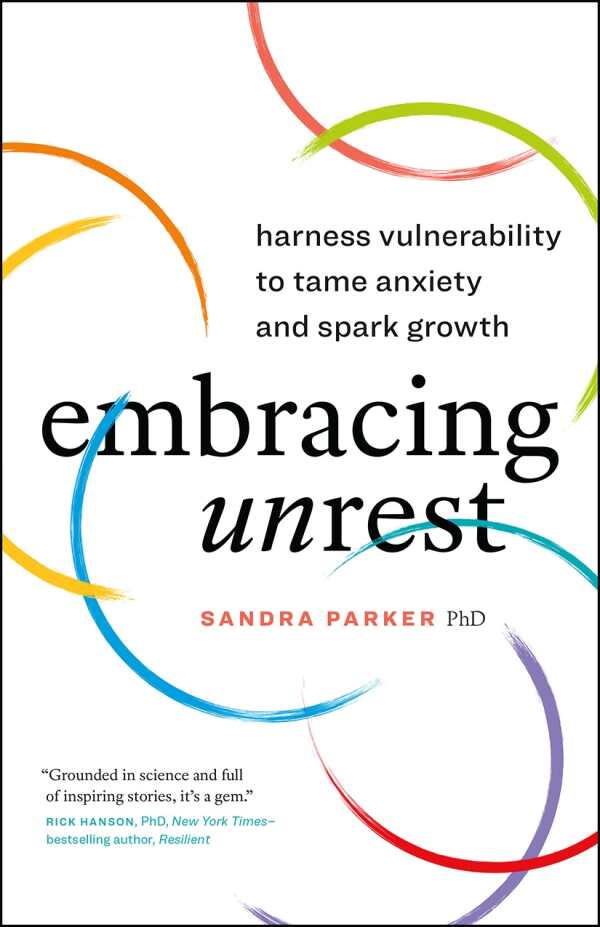It looks like you've stumbled upon a page meant to be read by our code instead of viewed directly. You're probably looking for this page.
Embracing Unrest
Harness Vulnerability to Tame Anxiety and Spark Growth
Embracing Unrest is a comforting self-help book about overcoming reflexive underestimations of one’s ability to cope with vulnerability.
Psychologist Sandra Parker’s self-help text Embracing Unrest suggests ways to prevent stress from escalating into anxiety.
The book notes that unrest is the precursor to anxiety, panic, and intense, difficult-to-process emotions. It asserts that, if people pay attention to physiological signals of unrest before they escalate, they can prevent their anxieties from developing further and avoid the strenuous experience of unraveling unconscious, limiting beliefs through therapy later. Its techniques include self-awareness practices and journaling, even reaching back into childhood to examine the roots of one’s beliefs and coping mechanisms. The book also discusses people’s capacities for authenticity, resilience, connection, and interoception (being aware of what is happening inside the body); it insists on the value of vulnerability.
From the start, the text distinguishes between unrest, anxiety, and fear with poignant clarity: “Fear is the emotional truth about immediate danger. Anxiety is a lie told to remove you from the discomfort of unrest.” The text is heavy on explanations, though; it takes some time to arrive at its practical advice. The anecdotes in the first chapter exemplify concepts that have not yet been discussed, though those that follow are more generally applicable.
Stories from Parker’s life and her patients’ lives are used to highlight evidence of unrest and to show the book’s recommended practices in action: a patient is fearful of telling Parker the reason that she came to therapy; Parker addresses the obvious tension in her body until she is relaxed enough to open up. Such examples help to clarify the book’s often abstract language.
The book eases into its tougher concepts with sympathy. With acuity, it redefines terms that appear simple, like warmth and nonjudgment, providing different, more approachable perspectives. It suggests skeptic-friendly uses for its more abstract ideas. But its repetition of assertions about noticing unrest in the body and confronting past trauma in a safe space bog it down nonetheless.
Useful journaling and mindfulness practices are shared in each chapter, with an emphasis on understanding the physical manifestations of unrest and addressing them before delving deeper. These exercises are introduced in a patient, empathetic way, with explanations for why they are important and how they work: being specific in naming the symptoms of being tired or stressed, the book says, helps to identify the cause and solution of an issue, and confronting vulnerability by recording yourself talking about an emotional experience, then watching it back, is shown to be useful.
Gentle but authoritative, Embracing Unrest is a comforting self-help book about overcoming reflexive underestimations of one’s ability to cope with vulnerability.
Reviewed by
Aimee Jodoin
Disclosure: This article is not an endorsement, but a review. The publisher of this book provided free copies of the book and paid a small fee to have their book reviewed by a professional reviewer. Foreword Reviews and Clarion Reviews make no guarantee that the publisher will receive a positive review. Foreword Magazine, Inc. is disclosing this in accordance with the Federal Trade Commission’s 16 CFR, Part 255.
